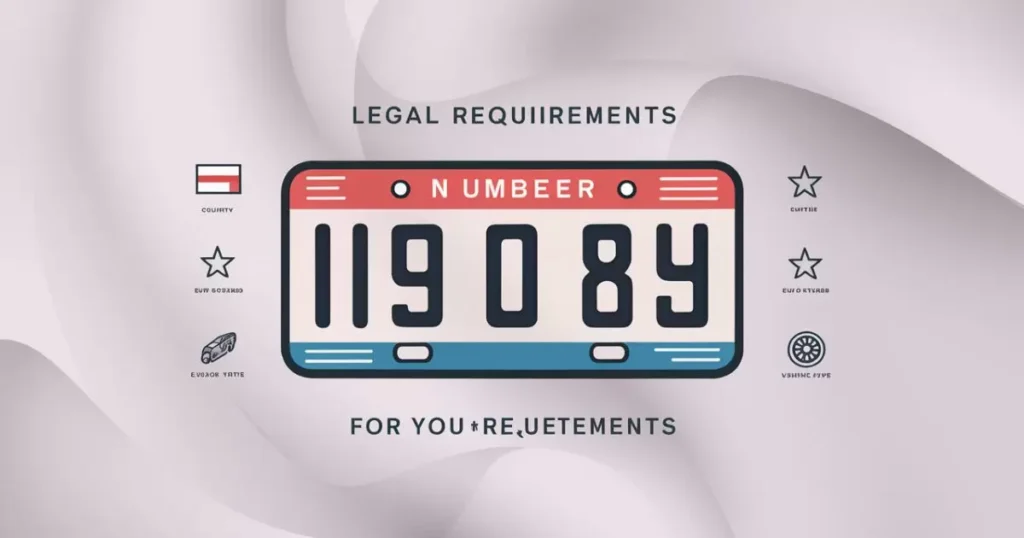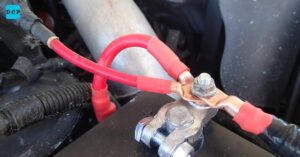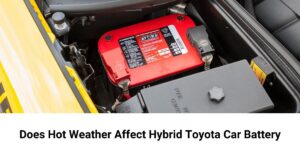Introduction
“4D Number Plates offer a stylish alternative but must meet specific legal standards to ensure they are valid and compliant with regulations.”
In recent years, 4D number plates have gained popularity for their unique and stylish appearance. These plates are characterized by their raised, 3D effect that adds a modern twist to traditional vehicle registration plates. However, with their growing popularity, many vehicle owners are questioning the legality of these plates and whether they adhere to established regulations.
Understanding whether 4D number plates are legal and what rules govern their use is crucial for anyone considering this customization for their vehicle.
The primary concern with 4D number plates is ensuring they comply with legal standards set by regulatory authorities. These standards are designed to ensure that number plates are easily readable and identifiable by various systems, including law enforcement tools like ANPR (Automatic Number Plate Recognition) cameras.
This article will delve into the specific rules surrounding 4D number plates, how they must be displayed, and what penalties might arise from non-compliance.
By exploring the legal requirements and practical considerations for 4D number plates, this guide aims to provide clarity for vehicle owners. Whether you’re looking to upgrade your plate to a 4D design or are simply curious about the regulations.
This article will help you navigate the complexities of number plate legality and ensure that your vehicle remains within the bounds of the law.
Black Characters

Black characters are a standard requirement for number plates across many jurisdictions. The primary function of black characters is to ensure high contrast against the plate’s background, making the plate easily readable both by humans and automated systems. The use of black characters is critical for maintaining visibility and legibility, which are essential for various applications, including ANPR systems and roadside checks.
When it comes to 4D number plates, the color and design of the characters must still adhere to these standard requirements. Despite their raised, 3D appearance, the black characters on 4D plates need to be clearly visible against the plate’s background. This ensures that the plate remains compliant with legal standards and can be read accurately by various recognition technologies and law enforcement tools.
In addition to color, the thickness and font of the characters must also comply with regulatory guidelines. These specifications are designed to ensure that regardless of the plate’s aesthetic design, it maintains the functional qualities required for identification and enforcement purposes. Adhering to these standards helps prevent issues with readability and legal complications.
Character Thickness & Readability
The thickness of the characters on a number plate is a crucial factor in ensuring its readability. For 4D number plates, the raised characters should not be so thick that they obstruct or distort the plate’s readability. Conversely, if the characters are too thin, they might not be picked up effectively by ANPR cameras or might be difficult for individuals to read at a distance.
Proper character thickness ensures that the plate meets both aesthetic and functional requirements. It is important to strike a balance between a visually appealing design and the technical requirements set by regulatory bodies. Characters that are either too thick or too thin can result in issues with plate recognition and may even lead to fines or penalties if the plate fails to meet legal standards.
To comply with regulations, the character thickness should be checked against guidelines provided by local authorities. These guidelines are in place to ensure that all number plates, including those with 4D designs, remain functional and meet legal requirements. Regularly reviewing these standards and making necessary adjustments helps maintain compliance and avoid potential legal issues.
ANPR Cameras
ANPR (Automatic Number Plate Recognition) cameras are widely used for various purposes, including law enforcement, parking management, and security. These cameras rely on the clear visibility of number plates to function correctly.
For a number plate to be effectively recognized by ANPR systems, it must adhere to specific visibility and readability standards.
The presence of raised characters on 4D number plates can affect how well ANPR cameras read the plate. If the design interferes with the camera’s ability to capture a clear image, it could lead to misreads or non-reads, potentially causing issues for the vehicle owner.
Therefore, ensuring that the 4D number plate design is compatible with ANPR technology is crucial for legal compliance and functionality.
Furthermore, different ANPR cameras may have varying sensitivity and requirements for number plate clarity. It is important for vehicle owners to ensure that their 4D number plates meet the necessary specifications for the types of cameras used in their area
This consideration helps in maintaining the effectiveness of ANPR systems and avoiding any potential legal or operational issues.
3D Number Plates from SurePlates
Types of Camera
Various types of ANPR cameras are utilized for reading vehicle number plates, each with specific features and requirements. Some cameras are designed for high-speed enforcement, while others are used in more controlled environments like parking facilities or toll booths. Each type has different requirements for plate clarity and visibility to ensure accurate readings.
High-speed ANPR cameras, for example, need number plates to be extremely clear and legible at high velocities. The raised design of 4D number plates must not interfere with the camera’s ability to capture clear images quickly
Conversely, cameras used in stationary or low-speed applications may have different requirements, though clarity remains a critical factor.
Understanding the type of ANPR camera in use can help vehicle owners ensure that their 4D number plates meet the necessary standards.
By aligning the plate design with the specific requirements of the cameras used in their area, vehicle owners can help avoid issues with plate recognition and ensure compliance with legal standards.
Understanding 4D Number Plates
4D number plates feature raised characters that create a three-dimensional effect, adding a modern and unique look compared to traditional flat plates. These plates are popular for their aesthetic appeal but must still adhere to legal standards to be deemed compliant. Understanding how these plates work and their compliance with regulations is crucial for anyone considering this customization.
The raised characters on 4D plates are designed to enhance visual appeal, but they must not compromise the plate’s functionality. The characters should be of sufficient thickness and contrast to ensure they can be read by both humans and automated systems
Regulatory guidelines specify these requirements to ensure that all number plates remain functional and easily recognizable.
It is important to balance the design elements of 4D plates with the need to comply with legal standards. Ensuring that the plate’s raised characters meet the required specifications for readability and visibility helps maintain compliance and avoid potential legal issues. Understanding these aspects can guide vehicle owners in making informed decisions about their number plate design.
Legal Requirements for Number Plates

Legal requirements for number plates are established to ensure consistency and readability across all vehicles. These requirements cover various aspects, including character size, font, color, and spacing. For 4D number plates, adhering to these regulations is essential to ensure that the plate is both aesthetically pleasing and legally compliant.
Each jurisdiction may have specific rules regarding the design and appearance of number plates. These rules are in place to maintain uniformity and ensure that all plates can be read effectively by both humans and automated systems.
For 4D number plates, it is crucial to understand and follow these regulations to avoid issues with legality and plate recognition.
Failure to comply with legal requirements for number plates can result in penalties or fines. Ensuring that 4D number plates meet all necessary standards helps prevent such issues and ensures that the plate is recognized correctly by law enforcement and other authorities
Regularly reviewing and adhering to these requirements is essential for maintaining compliance.
Regulations for 4D Number Plates in Different Countries
Regulations for 4D number plates vary from country to country. While some countries may have specific guidelines for raised characters and 3D designs, others may have stricter standards that must be followed. It is important for vehicle owners to be aware of the regulations in their specific country to ensure that their 4D number plates are compliant.
In some countries, the use of 4D number plates may be restricted or subject to additional requirements. For example, certain jurisdictions may mandate specific character thickness or font styles to ensure readability and compliance with local standards. Understanding these regulations helps vehicle owners avoid potential issues and ensures their plates meet all legal requirements.
Vehicle owners should consult local regulations and authorities to determine the specific rules applicable to 4D number plates in their country. This includes checking for any recent updates or changes in the law that might affect the legality of 4D designs. Staying informed about these regulations helps maintain compliance and avoid any legal complications.
Compliance with UK Number Plate Standards
In the UK, number plate regulations are governed by the DVLA (Driver and Vehicle Licensing Agency) and include specific standards for size, character spacing, and font. For 4D number plates, compliance with these standards is crucial to ensure that the plate is legally acceptable. The UK regulations require that number plates must be easily readable and conform to set specifications.
4D number plates must adhere to UK standards for character height, width, and spacing. The raised characters should not exceed the allowed thickness or distort the plate’s readability. The background and character colors must also meet the required contrasts to ensure that the plate is visible and identifiable.
Failure to comply with UK number plate standards can result in penalties or legal issues. Vehicle owners should ensure their 4D number plates are tested and verified for compliance with UK regulations to avoid any problems. Regularly checking the standards and ensuring the plate meets all requirements helps maintain legal status and functionality.
Consequences of Using Non-Compliant 4D Plates
Using non-compliant 4D number plates can lead to several consequences, including legal penalties and issues with vehicle identification. If a number plate does not meet the required standards for readability and design, it may not be recognized by ANPR systems or law enforcement, leading to potential fines or enforcement actions. Additionally, the vehicle owner may face inconvenience, such as being stopped by authorities or having their vehicle flagged for non-compliance.
Beyond legal repercussions, non-compliant plates can affect the vehicle’s registration status and may lead to complications when dealing with insurance companies. Some insurers may require that number plates meet specific legal standards to validate coverage. If a plate does not comply with regulations, it could potentially impact claims or coverage, resulting in further issues for the vehicle owner.
To avoid these consequences, it is essential to ensure that any 4D number plates used on vehicles meet all regulatory standards. Regular checks and verification against local and national guidelines can help prevent legal issues and ensure that the plate remains functional and compliant.
Tips for Ensuring Your 4D Number Plate is Legal

To ensure your 4D number plate is legal, start by familiarizing yourself with the specific regulations governing number plates in your region. This includes understanding the required character size, thickness, and spacing, as well as any restrictions on the use of 3D or raised characters. Consulting with local authorities or vehicle registration offices can provide valuable guidance on what is permissible.
When purchasing or customizing a 4D number plate, choose a reputable supplier who adheres to legal standards. Ensure that the plate meets all visibility and readability requirements, and consider having it inspected or tested for compliance before installation. This helps to confirm that the plate will be recognized by ANPR systems and law enforcement.
Regularly review and update your knowledge of any changes in number plate regulations to ensure ongoing compliance. By staying informed and proactive, you can avoid potential legal issues and ensure that your 4D number plate remains both stylish and legally acceptable.
ANPR Results
ANPR results are critical for assessing the effectiveness of number plates, including 4D designs. These results indicate how well ANPR systems can read and interpret the information on a number plate. For a 4D plate to be effective, it must produce clear and accurate results when scanned by ANPR cameras.
In testing scenarios, the performance of 4D number plates can vary based on their design and adherence to legal standards. Plates with raised characters may sometimes cause issues with readability if the characters are not within the specified thickness or contrast requirements. Accurate ANPR results are essential for ensuring that the plate is functional and compliant with regulations.
If a 4D number plate consistently produces clear ANPR results, it indicates that the plate meets the necessary standards for visibility and readability. However, if issues arise, adjustments to the plate’s design or character specifications may be needed to improve its performance and compliance.
Y0URDEG – That’s a Zero, Not an ‘O’
When dealing with 4D number plates, the accuracy of character recognition is crucial. For example, in the plate Y0URDEG, the character ‘0’ (zero) must be distinguishable from the letter ‘O’. This distinction is vital for ANPR systems to correctly read and process the plate information.
Misinterpretations between numbers and letters can lead to issues with vehicle identification and legal compliance. Ensuring that the characters on the number plate are clear and unambiguous helps to avoid such problems. \
Proper design and adherence to standard guidelines can help prevent confusion and ensure accurate readings by ANPR systems.
In summary, the correct representation of characters on a 4D number plate is essential for functionality and compliance. Vehicle owners should ensure that their plates use distinct and readable characters to facilitate accurate recognition and avoid potential legal issues.
A Real Test
Conducting a real test of 4D number plates involves assessing their performance under actual conditions. This includes how well the plate performs in various scenarios, such as different lighting conditions and speeds. Testing is crucial to determine if the plate meets all regulatory standards and performs effectively in real-world situations.
During a real test, we evaluate factors such as character thickness, contrast, and overall design. The plate must be readable by ANPR systems and easily recognizable by human observers. This practical assessment helps to ensure that the plate is both functional and compliant with legal requirements.
By conducting thorough tests, vehicle owners can verify that their 4D number plates perform as expected and comply with all relevant regulations. This proactive approach helps prevent issues and ensures that the plate remains effective and legally acceptable.
The (Real) Results Are In

The results from testing 4D number plates provide valuable insights into their performance and compliance with legal standards. These results indicate whether the plates meet the required specifications for readability and visibility. Analyzing these results helps to identify any potential issues and make necessary adjustments to ensure compliance.
Real-world testing results can reveal how well a 4D number plate performs under various conditions, such as different lighting and speed scenarios.
Plates that produce clear and accurate results are likely to be compliant with regulatory standards, while those with issues may need design modifications.
Incorporating the findings from these tests can help vehicle owners ensure that their 4D number plates remain functional and meet all legal requirements. Regular testing and adjustment based on real-world results contribute to maintaining compliance and avoiding potential legal issues.
Printed Control Test
A printed control test involves using a standard set of number plates for comparison to assess the performance of 4D plates. This test helps to establish a baseline for readability and visibility by comparing 4D plates to traditional flat plates. It provides insights into how well 4D plates perform relative to established standards.
During the printed control test, we evaluate factors such as character thickness, contrast, and overall design. This test helps identify any deviations from the standard requirements and determine if we need to make adjustments to ensure compliance with legal standards.
The results from the printed control test can guide vehicle owners in making necessary modifications to their 4D number plates. Ensuring that the plate performs well in comparison to standard plates helps to maintain functionality and compliance with regulations.
4D (3 mm) Results
Testing 4D number plates with a character thickness of 3 mm involves evaluating how this design impacts readability and compliance. The results indicate whether plates with this thickness meet the required standards for visibility and recognition by ANPR systems.
3 mm thickness is at the lower end of the spectrum for 4D plates. Plates with this thickness should be tested to ensure they do not interfere with the readability of characters. Adequate testing helps to confirm that the plate performs well and meets legal requirements.
If tests find that 4D plates with 3 mm characters are compliant and effective, you can consider them suitable for use.
4D (5 mm) Results
Testing 4D number plates with a character thickness of 5 mm assesses how this design affects the plate’s performance and compliance. People often use this thickness to balance aesthetics with readability, ensuring that the plate is both stylish and functional.
5 mm thickness is a common choice for 4D plates, providing a clear 3D effect while maintaining readability. Testing results should show that plates with this thickness meet the necessary visibility standards and that ANPR systems can read them accurately. Using this thickness balances aesthetics with readability and ensures that the plate is both stylish and functional.
If 4D plates with 5 mm characters meet all regulatory requirements and perform well, you can use them confidently. Regular testing helps to ensure that the plates remain compliant and effective, providing both visual appeal and functional performance.
4D (10 mm) Results

4D number plates with a character thickness of 10 mm offer a more pronounced 3D effect, which can enhance their visual appeal. Testing these plates involves assessing whether this increased thickness impacts their readability and compliance with legal standards.
While a 10 mm thickness can create a bold design, ensure that it does not hinder the plate’s readability by ANPR systems or human observers. Proper testing helps to determine if the increased thickness remains within acceptable limits for readability and recognition.
The results from testing 4D plates with 10 mm characters will indicate if this thickness is practical and compliant with regulations.
If the plates do not meet the required standards, you may need to make adjustments to keep them both visually appealing and legally acceptable
Answers to Key Questions
Are 4D number plates legal?
Yes, 4D number plates can be legal if they comply with the specific regulations set by local authorities. Ensure that the plates meet all required standards for character size, thickness, and contrast to use them legally.
What are the key requirements for 4D number plates?
Key requirements for 4D number plates include specific guidelines on character size, thickness, and visibility. The characters must be clearly readable, with no significant deviation from standard plate specifications.
For example, in the UK, number plates must follow strict standards to ensure they are easily readable by ANPR systems and law enforcement.
What happens if my 4D number plate is non-compliant?
If your 4D number plate is non-compliant, you could face legal consequences such as fines or penalties. Ensuring compliance with regulations helps avoid these problems.
How can I test if my 4D number plate is compliant?
To test compliance, assess your 4D number plate in different conditions and check readability with ANPR systems. Use a printed control test to compare your plate against standard designs and verify that it meets all regulatory requirements. .
What is the impact of character thickness on readability?
Character thickness affects the readability of a 4D number plate. Thicker characters (5 mm or 10 mm) may look better but must still be readable.
Where can I find information on the regulations for 4D number plates?
Check local vehicle registration authorities, transportation departments, or government websites for 4D number plate regulations.
Conclusion
4D number plates offer a stylish update to traditional designs, but you must follow legal standards to use them
Ensuring that these plates meet regulations for character thickness, readability.
And visibility is crucial for avoiding legal issues and ensuring proper functionality.
Following local and national guidelines ensures ANPR systems work well and avoids issues with law enforcement
Vehicle owners considering 4D number plates should be proactive in verifying their compliance with all applicable standards. This includes understanding the specific requirements for plate design. And conducting tests to ensure the plate performs well under various conditions.

Hi! I’m Liam Scott, the creator behind DriveCarsPedia.com. I’m passionate about cars and dedicated to providing you with expert reviews, detailed guides, and the latest automotive trends. Explore my site for reliable information and insights to fuel your love for cars!








